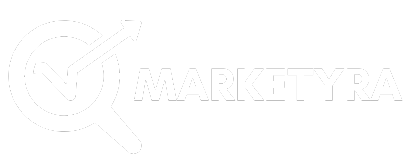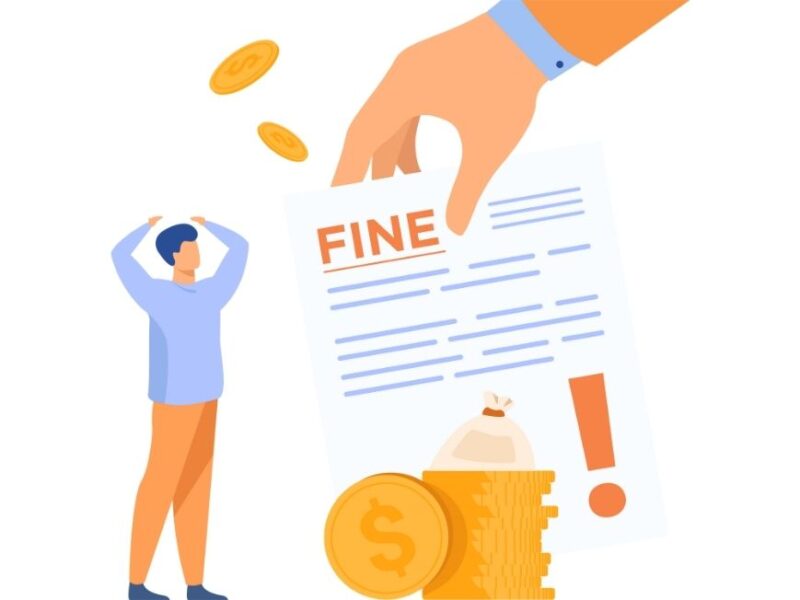On this page you will read detailed information about Google Penalty Explained.
Navigating the digital landscape demands a keen understanding of search engine dynamics, especially when it comes to Google penalties. As a website owner or digital marketer, you are likely aware that a Google penalty can significantly impact your site’s visibility and traffic. But what exactly does this penalty entail, and how can it affect your online presence? In this article, you will explore the intricacies of Google penalties, uncovering their causes, types, and consequences, so you can safeguard your site’s performance and ensure compliance with Google’s ever-evolving algorithms.
Understanding Google Penalty: What Is It?
Definition and Core Concept
A Google Penalty represents a marked decline in a website’s ranking within Google’s search results, often due to noncompliance with Google’s Webmaster Guidelines. This penalty can be manual, where a human reviewer flags the site, or algorithmic, triggered by updates like the notorious Penguin or Panda. Both types aim to ensure search results remain relevant, reliable, and free from manipulative practices.
Causes of a Google Penalty
Infractions leading to a Google Penalty vary, but some common culprits include:
- Keyword Stuffing: Overloading pages with targeted keywords in an unnatural manner.
- Cloaking: Displaying different content to users than what is presented to search engines.
- Paid Links: Engaging in buying or selling links to manipulate PageRank.
- Duplicated Content: Publishing content that is not original or has been copied from other sources.
Understanding these violations is crucial for prevention and remediation, ensuring your website adheres to best practices.
Impact on Your Website
A Google Penalty can severely impact your website’s visibility and traffic, sometimes reducing it to a trickle. This penalty affects not only your search engine rankings but can also damage your brand’s reputation and credibility among users. It’s essential to regularly audit your site, staying informed about Google’s evolving algorithms and guidelines.
Steps to Recovery
Recovery from a Google Penalty involves identifying the issue, rectifying the errors, and submitting a reconsideration request if it was a manual penalty. Regular monitoring, quality content creation, and adherence to ethical SEO practices are vital for maintaining a penalty-free status.
By understanding what a Google Penalty is and how it operates, you can safeguard your site against these costly ranking setbacks.
Different Types of Google Penalties
Manual Penalties
Manual penalties, also known as manual actions, involve a deliberate intervention by Google’s review team. A manual penalty can occur when your site is found in violation of Google’s Webmaster Guidelines. This includes practices such as buying or selling links, cloaking, or utilizing other deceptive techniques to manipulate search rankings. If your site incurs a manual penalty, you will typically receive a notification via Google Search Console, detailing the issue and suggesting possible corrective measures. Addressing these penalties involves rectifying the identified problems and requesting a reconsideration from Google once you’ve made the necessary changes.
Algorithmic Penalties
Algorithmic penalties differ from manual penalties as they are automatically applied by Google’s search algorithms. These penalties occur when updates to Google’s search algorithms—such as Panda or Penguin—detect suspicious patterns or poor-quality content on your site. Unlike manual penalties, algorithmic penalties do not come with explicit notifications, making them trickier to identify. A sudden drop in search rankings or organic traffic can indicate an algorithmic penalty. To recover, it is essential to enhance the quality of your content and improve the overall user experience on your website.
Temporary vs. Permanent Penalties
Google penalties can also be categorized based on their duration. Temporary penalties are those that are lifted once you address the specified issues and successfully request a reconsideration. On the other hand, permanent penalties might affect your site for an extended period or indefinitely, especially if the violations are severe or repeated. It is crucial to approach the remedy process with diligence and thoroughness to ensure that all infractions are corrected and to prevent future penalties.
Understanding the different types of Google penalties is essential for maintaining your site’s health and search engine visibility. Familiarizing yourself with potential issues and staying abreast of Google’s guidelines can help in safeguarding your website from these detrimental penalties.
How a Google Penalty Can Affect Your Website
Impact on Website Traffic
A Google Penalty can have a profound impact on your website’s visibility and traffic. When your site incurs a penalty, it often leads to a significant loss in search engine rankings, causing your pages to drop in the search results or, in severe cases, disappear completely. This loss of visibility inevitably results in decreased organic traffic, which can be detrimental to both your online presence and business revenue. In some instances, penalties can cut down the number of visitors by more than half, which can have a cascading effect on sales, inquiries, and overall brand awareness.
Effect on Search Rankings
The primary objective of any website is to rank high on search engines, and penalties can severely hinder this goal. When the Google Penalty is applied, your site’s authority is questioned, and the trust factor diminishes. This can result in your site being pushed down to lower pages of search results, where visibility is substantially reduced. While some penalties are temporary, needing corrective action to restore rankings, others can be more severe, requiring a complete overhaul of your site’s content or technical structure.
Consequences on Brand Reputation
Additionally, a Google Penalty can tarnish your brand’s reputation. When users search for your company or related keywords and fail to find your site, it can create a perception of unreliability or lack of authority. This negative impression can lead to a decline in customer trust and loyalty, which is often difficult to rebuild. Furthermore, potential customers might turn to competitors, who appear more prominently in search results, further exacerbating the damage to your business.
In conclusion, understanding what a Google Penalty entails is crucial for maintaining a strong online presence. By being proactive in adhering to SEO best practices, you can safeguard your site from these detrimental impacts and ensure it continues to thrive.
Identifying If Your Site Has Been Penalized
Recognizing the Signs of a Google Penalty
Identifying whether your site has been impacted by a Google Penalty is crucial for maintaining your online visibility and traffic. While penalties can be either manual or algorithmic, recognizing the symptoms quickly can help mitigate any damage.
Drastic Drop in Website Traffic
One of the most immediate indicators of a Google Penalty is a substantial and sudden decrease in your website’s traffic. Use tools like Google Analytics to monitor your site’s traffic patterns. If you notice an abrupt drop without any apparent reason, it may warrant a deeper investigation into potential penalties.
Reduced Rankings in Search Results
A Google Penalty often results in diminished rankings or complete removal from search engine results pages (SERPs). Check your rankings regularly using SEO tools to ensure that your pages appear as expected for relevant keywords. If your pages have vanished from SERPs or have dropped significantly in ranking, a penalty might be at play.
Notifications in Google Search Console
Google Search Console is an essential tool for webmasters to stay informed. It provides notifications about any manual penalties applied to your site. Regularly checking for messages in your Search Console account can help you catch penalties early and take corrective action before they severely impact your site.
Inconsistencies in Backlink Profile
Examine your site’s backlink profile for any inconsistencies or sudden spikes in low-quality backlinks. Such anomalies are often associated with algorithmic penalties, particularly those targeting unnatural link patterns. Use tools like Ahrefs or SEMrush to analyze your backlinks and take action if questionable links are detected.
Prompt recognition and response to these indicators can help you address and recover from a Google Penalty efficiently, ensuring that your site remains a valuable resource for users and a competitive presence in search results.
In the previous post, we had shared information about What Is llms.txt? Exploring Its Key Functions, so read that post also.
Steps to Recover from a Google Penalty
Identify the Type of Penalty
The first step in recovering from a Google Penalty is to determine whether the penalty is manual or algorithmic. A manual penalty is issued by a human reviewer at Google, often due to a violation of webmaster guidelines. In contrast, an algorithmic penalty results from changes in Google’s search algorithms, affecting your site’s ranking. Begin by checking the Google Search Console for any notifications, as it will provide insights into the nature of the penalty.
Understanding the type of penalty is crucial because it dictates your recovery strategy. Manual penalties typically require more direct action, while algorithmic penalties involve optimizing your site to align with updated algorithms.
Assess and Rectify Violations
Once the type of penalty is identified, the next step is to assess the specific violations that led to it. For manual penalties, the Google Search Console will provide a detailed report indicating the issues to address. Common issues include unnatural links, thin content, or keyword stuffing. Conducting a thorough audit of your website will help you pinpoint these issues.
Rectifying these violations might involve removing or disavowing spammy links, improving content quality, or eliminating deceptive practices. A comprehensive approach ensures that all potential causes of the penalty are addressed, increasing the likelihood of a successful recovery.
Request Reconsideration or Optimize
For manual penalties, once violations are corrected, you must request a reconsideration from Google. This involves submitting a detailed report outlining the actions taken to resolve the issues. For algorithmic penalties, focus on optimizing your site following SEO best practices to align with Google’s latest algorithm updates.
Patience and persistence are key, as recovery can be a gradual process. By following these steps, you can effectively work towards regaining your site’s search visibility and performance.
Conclusion
In understanding Google penalties, you gain the foresight to protect your site’s standing and the insight necessary for strategic recovery, should you face one. A penalty can significantly impact your site’s traffic and credibility, but by adhering to best practices and staying informed about Google’s guidelines, you can safeguard your digital presence. This knowledge empowers you to not only navigate potential pitfalls but also to foster a robust, resilient online environment. As you move forward, remember that maintaining quality content and ethical SEO practices is your best defense against the unpredictable tides of search engine algorithms.
Disclaimer
The content published on the Marketyra blog is for educational and informational purposes only. While we strive to share accurate and up-to-date digital marketing tips, strategies, and trends, we do not guarantee any specific results. Readers are advised to use their own judgment before applying any tips or advice provided. Marketyra is not liable for any losses, damages, or issues arising from the use of blog content.
So friends, today we talked about Google Penalty Explained, hope you liked our post.
If you liked the information about Google Penalty Explained, then definitely share this article with your friends.
👉 Need help with SEO or digital marketing services?
Feel free to call us at 📞 +91-9306925861, email us at 📧 admin@marketyra.com to get in touch!






